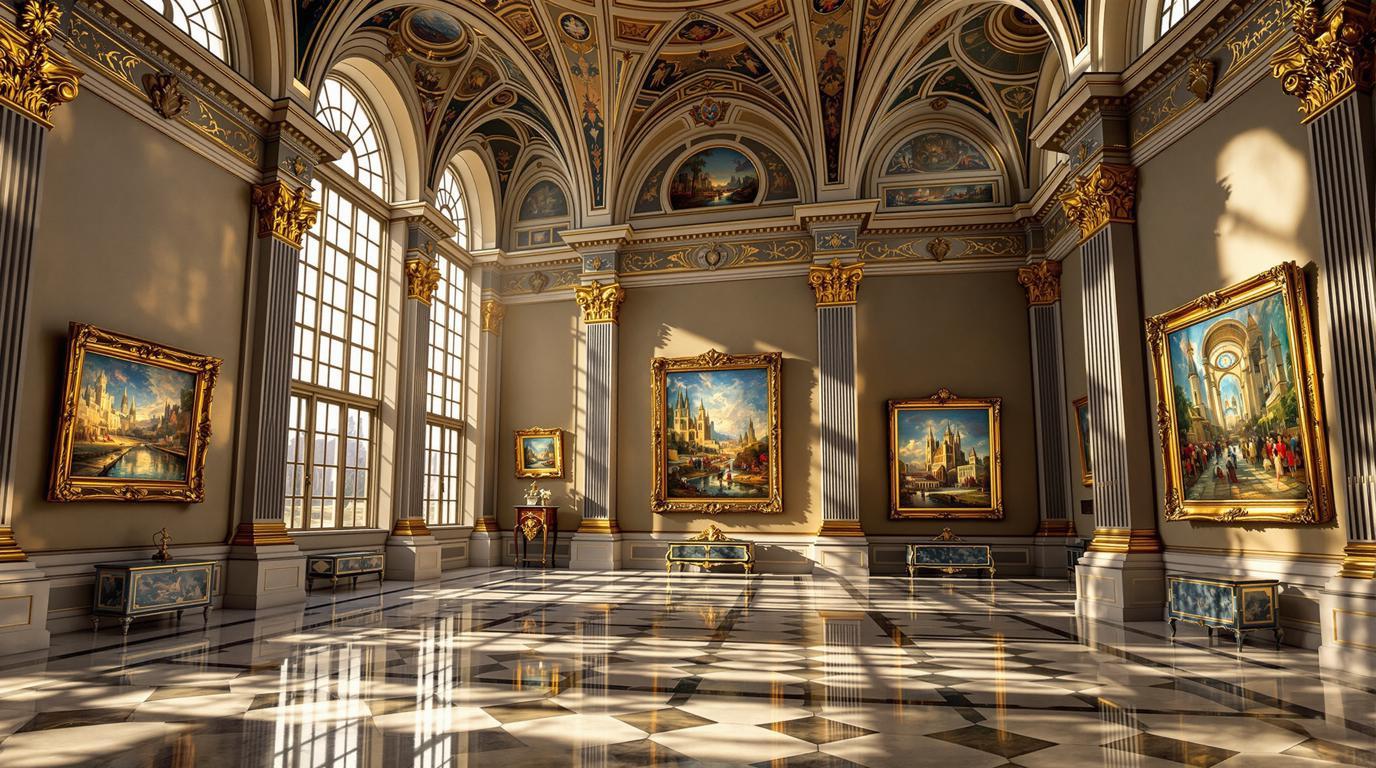The afternoon light filters through ancient stained glass, casting ruby and sapphire shadows across the stone floor as I stand transfixed before Monet’s cathedral studies. In this moment, I understand why Rouen’s Musée des Beaux-Arts remains one of France’s most overlooked treasures. While tourists flock to Paris’s Louvre or Musée d’Orsay, this provincial gem offers something increasingly rare: artistic masterpieces you can admire in solitude, with only the whisper of history as your companion.
Where medieval charm meets artistic revolution
Nestled in Normandy’s capital, the museum occupies an elegant 19th-century building where the collections span from Renaissance masters to Impressionist innovators. The museum’s origins date to Napoleon’s era, when art confiscated during the Revolution was distributed to regional centers, blessing Rouen with works that would make major metropolitan museums envious.
“Our museum breathes with the city,” explains Marie Laurent, veteran curator. “The same light that inspired Monet to paint thirty variations of our cathedral façade streams through our windows. Visitors experience art in the very atmosphere that created it.”
Beyond the expected Impressionist works, you’ll discover Caravaggio’s shadowy genius and Rubens’ dynamic canvases – all without the suffocating crowds of Paris.
Uncovering treasures beyond the guidebooks
The forgotten ceramic collection of Poterat
In a quiet corner of the second floor hides what ceramics experts consider a revelation: the Poterat collection. These delicate blue-and-white faience pieces represent Rouen’s 17th-century reign as France’s porcelain capital before Sèvres stole the spotlight. I spend an hour examining their intricate patterns while a local artisan sketches nearby, continuing traditions established four centuries ago.
Take the winding staircase to the basement to discover the museum’s unexpected connection to medieval villages through its collection of architectural fragments rescued from bombardments during World War II.
Sainte-Catherine’s secret viewpoint
After exploring the museum, follow Monet’s footsteps to Sainte-Catherine Hill, a 20-minute walk that rewards with panoramic views of Rouen’s spires and Seine River curves. This vantage point inspired dozens of his landscapes, yet remains mysteriously absent from most tourist itineraries. Bring a sketchbook – the changing light transforms the city hourly, just as in Monet’s famous series.
For the truly adventurous, nearby lies a tiny village concealing Europe’s shortest river, creating a perfect half-day excursion from the city center.
Savoring Norman flavors beyond tourist menus
Skip the tourist-packed bistros near the cathedral and venture to La Petite Auberge on rue Eau-de-Robec. This unassuming 16th-century building houses Rouen’s most authentic canard à la rouennaise – the city’s signature dish where duck is pressed to extract its blood for an intensely flavored sauce. The technique dates to medieval times, and chef Mathieu Carpentier uses ducks from the same marshlands that supplied the royal court.
Pair your meal with local Calvados apple brandy for a dining experience that captures Norman terroir with every bite. The apple-fed cattle of the region produce butter that transforms simple bread into a transcendent experience.
Timing your visit for maximum tranquility
Seasonal strategy
Visit in early October when summer crowds dissipate but warm light still bathes the region. The museum remains open until 6pm, but arrives at 4pm when most tour groups have departed. Thursdays offer extended evening hours with a completely different atmosphere as sunset transforms the galleries.
Hidden access points
Enter through the garden entrance rather than the main doors – this not only provides a moment of tranquility before your artistic immersion but typically has shorter security lines. The garden itself contains thoughtfully placed sculptures that dialogue with the natural surroundings.
When art becomes memory
As my train pulls away from Rouen, I reflect on how differently I experienced these masterpieces compared to jostling through Paris’s overcrowded galleries. Here, art isn’t merely seen but felt in its original context – the same light, the same stone streets, the same Norman mist that inspired centuries of artists continues to transform visitors into participants in a living artistic tradition.
